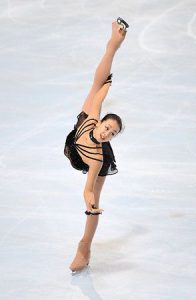 正確さにはいろいろ種類があり,それぞれ独自の重要性を持っている。主な種類をとりあげると,筋肉を使う正確さ,美的な正確さ,事実に関する正確さ,論理的な正確さがある。
正確さにはいろいろ種類があり,それぞれ独自の重要性を持っている。主な種類をとりあげると,筋肉を使う正確さ,美的な正確さ,事実に関する正確さ,論理的な正確さがある。
すべての少年少女は,いろんな面で,筋肉を使う正確さの重要性を的確に認識できる。それは,身体をコントロールするために必要であり,健康な子供は余暇のすべてをこのコントロールを身につけることに費やす。それは,やがては自分の威信にかかわるゲーム(遊戯/競技)のためにも必要である。
しかし,筋肉を使う正確さには,もっと学校の授業(学校教育)にかかわりのある別な形もある。たとえば,明瞭な話し方,上手な書き方,楽器の正しい演奏の仕方などである。子供は,環境に応じて,これらのことを重要だと考えたり,重要でないと考えたりする。
美的な正確さは,定義しにくい。それは,ある知覚できる刺激が情緒を生み出すために適切かどうか,にかかわるものである。
美的な正確さの重要な形を教える一つの方法は,子供たちに,詩を -たとえば芝居をするためにはシェイクスピアの詩を- 暗記させることである。彼らが言いまちがえたときには,なぜ原文のほうがすぐれているかを感じとらせることである。美的な感受性が広くゆきわたっているところでは,子供たちに,ダンスや歌のような,伝統的な型にはまった演技を教えることができ,子供たちは,そういう演技を楽しむが,しかし,伝統に従って正確にそれを演じなければならない,ということがわかる,と私は信ずる。こうすれば,子供たちは,微妙な違いに気づくようになる。こういう感受性は,正確さにとって不可欠である。演技や歌唱や舞踏は,美的な正確さを教えるのに最適の方法であるように思われる。絵を描くことは,それらほどうまくいかない。なぜなら,絵は美的な基準によって判断されるよりも,お手本にどれだけ忠実であるかによって判断されやすいからである。なるほど,型にはまった演技も,お手本を再現することを期待されてはいる。しかし,そのお手本は,審美的な動機から創り出されたものである。お手本がよいからまねるのであって,まねることがよいからまねるのではない。
There are various kinds of accuracy, each of which has its own importance. To take the main kinds : There is muscular accuracy, aesthetic accuracy, accuracy as to matter of fact, and logical accuracy. Every boy or girl can appreciate the importance of muscular accuracy in many directions ; it is required for the control of the body which a healthy child spends all its spare time in acquiring, and afterwards for the games upon which prestige depends. But it has other forms which have more to do with school teaching, such as well-articulated speech, good writing, and correct performance on a musical instrument. A child will think these things important or unimportant according to his environment. Aesthetic accuracy is difficult to define ; it has to do with the appropriateness of a sensible stimulus for the production of emotion. One way of teaching an important form of it is to cause children to learn poetry by heart–e.g. Shakespeare, for purposes of acting–and to make them feel, when they make mistakes, why the original is better. I believe it would be found that, where aesthetic sensibility is widespread, children are taught conventional stereotyped performances, such as dances and songs, which they enjoy, but which must be done exactly right on account of tradition. This makes them sensitive to small differences, which is essential to accuracy. Acting, singing, and dancing seem to me the best methods of teaching aesthetic precision. Drawing is less good, because it is likely to be judged by its fidelity to the model, not by aesthetic standards. It is true that stereotyped performances also are expected to reproduce a model, but it is a model created by aesthetic motives ; it is copied because it is good, not because copying is good.
出典: On Education, especially in early childhood, 1926, Pt. 2:Education of character, chap. 14: General principles
詳細情報:https://russell-j.com/beginner/OE14-090.HTM
<寸言>
伝統をまねたり(守ったり),人のやることをまねるのは,まねることが良いからまねるのではなく,まねるものが良いからまねるのである。良くないものをまねるのはよくない。だから,理屈をいわずにまずまねろと強制するのはよくない。
